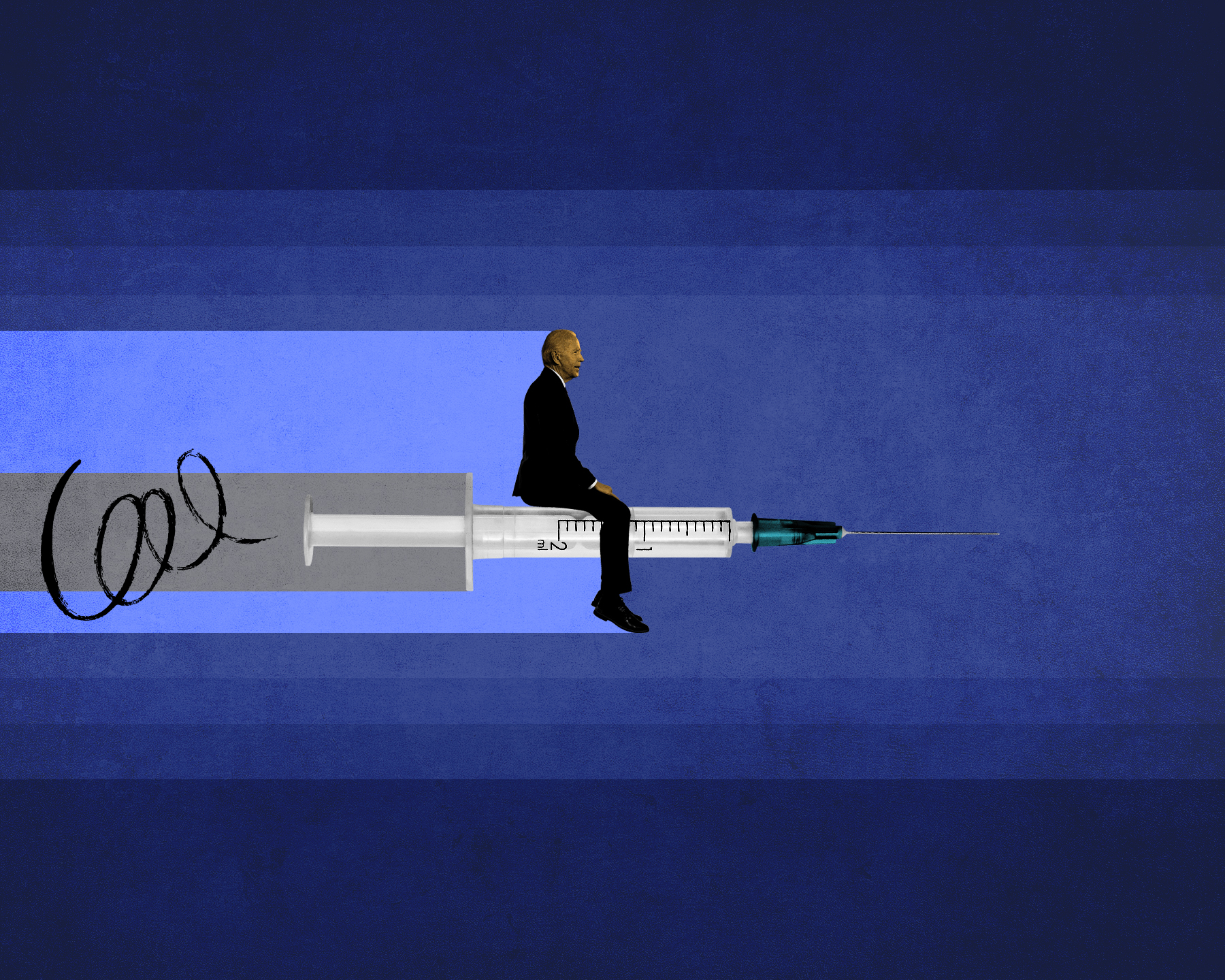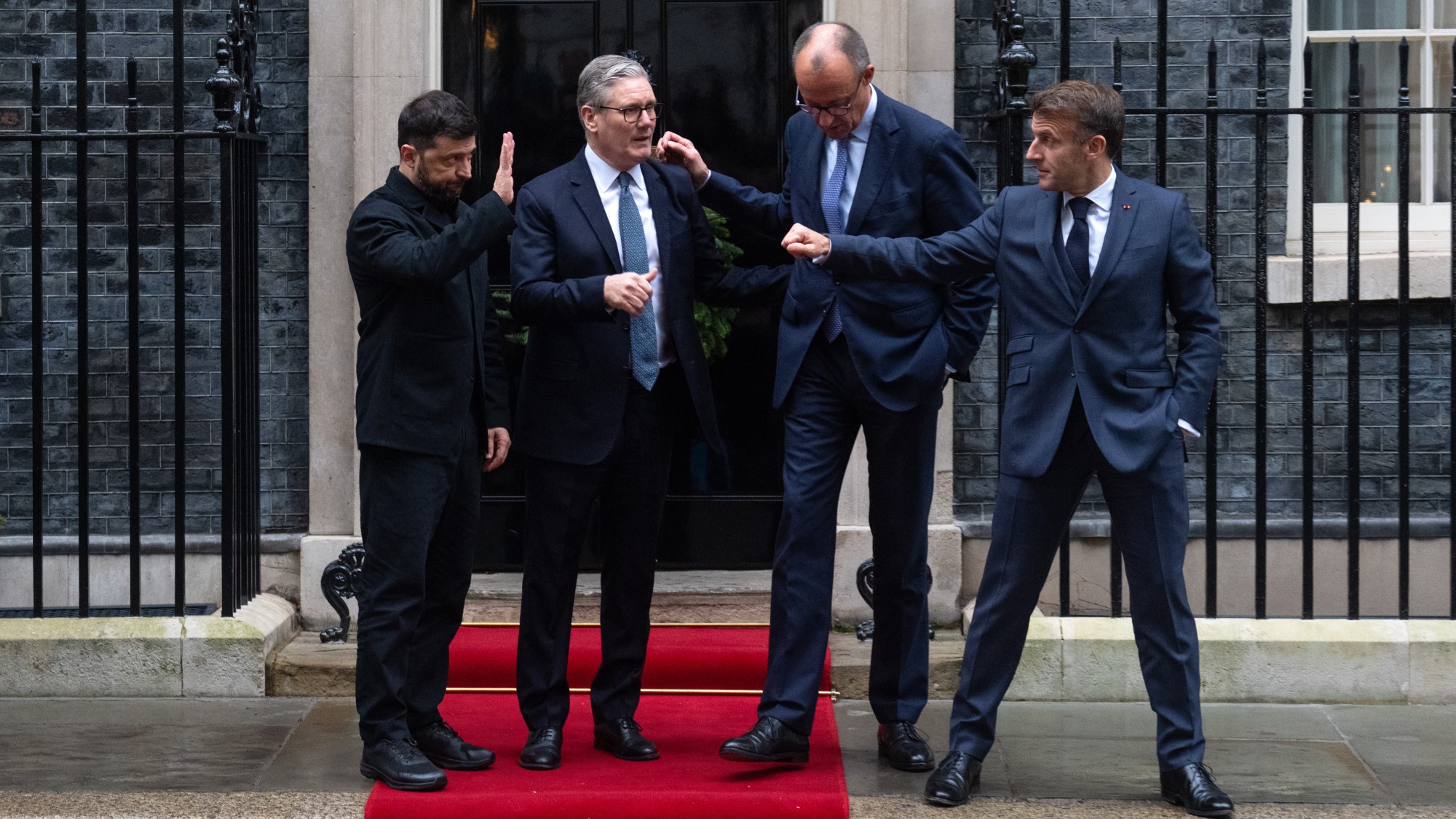Biden foolishly low-balls America's COVID response
If the president underpromises on coronavirus, he might just underdeliver, too


I'm starting to worry the Biden administration isn't taking the fight against COVID-19 seriously enough.
That sounds crazy, I know. Biden was only inaugurated on Wednesday; he can hardly be expected to have accomplished much. And his announced plan is full of excellent and long-overdue initiatives: mask mandates on transportation, expanded testing, and community vaccination centers, including — my particular favorite — mobile units to bring the vaccine directly to people disconnected or remote from health-care providers.
Nonetheless, I worry.
The Week
Escape your echo chamber. Get the facts behind the news, plus analysis from multiple perspectives.

Sign up for The Week's Free Newsletters
From our morning news briefing to a weekly Good News Newsletter, get the best of The Week delivered directly to your inbox.
From our morning news briefing to a weekly Good News Newsletter, get the best of The Week delivered directly to your inbox.
My worries start with the extremely low target for total shots to be administered. A hundred million shots in 100 days may sound like a lot, but that's only one million shots per day. At that rate, it would take nearly two years to inoculate the entire country (assuming two shots per person). The 100 million shot goal doesn't even slightly stretch the existing capacity of vaccine supplies, and more vaccine should be on the way by the spring, both from Pfizer and Moderna and from Johnson & Johnson, assuming their vaccine is approved. Most absurd, this target is barely more than our current run-rate of just over 900,000 shots per day. How could anyone describe that as a "bold goal?"
Perhaps, as many have suggested, Biden's team is merely setting the bar low so they can vault over it. But low expectations have a funny way of leading to worse outcomes. Politicians, like everyone else, respond to incentives, and if the incentive is to clearly beat the number, then 110 million shots is just as good as 150 million. With a blizzard of other priorities competing for attention, I want the Biden team terrified of taking their eye off the most important ball of all.
And that ball is COVID. It's not just that over 4,000 Americans are dying of it every day. It's not just that the economy can't truly recover until not only the various restrictions Americans have been living under are lifted, but the prospect of such restrictions, which inhibit business investment even when they aren't in place, are clearly behind us as well. It's that neither the American people nor the virus that is ravaging them are going to give Biden and his team the time they seem to think they need.
Let's start with the people. Even last spring, Americans never accepted a level of restriction that many European countries imposed to contain the virus. Since then, the population has grown even more resistant, with millions balking at simple requirements like masking in indoor spaces. The only way even local and limited restrictions — which will be periodically necessary over the coming months to keep hospitals from being overwhelmed — will be obeyed is if they're plainly and clearly time-limited. But only an aggressive vaccine-delivery timeline can provide confidence that such time limits will be real.
A free daily email with the biggest news stories of the day – and the best features from TheWeek.com
The larger worry, though, is the virus itself. The longer the virus circulates widely, the more opportunity it has to mutate into new forms that are deadlier or more transmissible, as it has already done in Britain and South Africa. Compare the CDC-predicted trajectories for the virus with or without the vaccine. Because of the new, more transmissible (and possibly deadlier) British variant, which is already present in America, the pandemic would already be poised for a new lease on life were it not for the vaccines. But at a one million shot/day rate, we may only cut the prevalence of the virus in half by May. That's totally inadequate. Precisely because the new mutations are more transmissible, our goal should be to inoculate as fast as possible, so that the only bottleneck is how much vaccine we can produce — which, in turn, will create the necessary political pressure to ramp up production (and approvals) even faster.
Meanwhile, even the limited progress projected by the CDC assumes that the existing vaccines work equally well against new mutations — which is not certain. For that reason, fighting these new variants doesn't just require travel restrictions and proper surveillance; it requires an even more robust vaccine-deployment infrastructure that can produce new shots optimized against these mutations (something these new mRNA vaccines are particularly suited for). The faster we stand that infrastructure up, the better prepared we’ll be to pivot quickly in response to whatever the virus throws at us.
America has fought a lot of metaphorical wars over the years — against poverty, against drugs — and the thing about these metaphorical wars is that they can never really be won. Not coincidentally, over the same period the real wars we've fought have had the same character: They might be fought to a stalemate, but not to victory. I worry that COVID has already become another such metaphorical war — but it shouldn't be. COVID fatigue and viral mutation are real reasons why the next phase of the battle is going to be hard. They cannot become excuses for failure — nor for failing to achieve victory as quickly as possible. Because victory is absolutely within reach. We just may have to stretch to grasp it.
So that's what I want to see the Biden administration doing: stretching to grasp victory. They shouldn't be setting a low-ball target of 100 million shots in 100 days. They should be setting a target date for universal vaccination — June sounds good to me — and take whatever steps are necessary to hit or beat it. They shouldn't be talking in terms of run rate, but in terms of doubling time — how quickly can we go from one million shots per day to two million, and then to four million. They shouldn't be preparing us to live this half-life for another year. They should be preparing for Broadway theaters and baseball stadiums to be full in the fall, encouraging businesses to plan accordingly, and telling us what they are doing — and what we need to do — to get there.
The last president did a lot of promising and very little delivering, so I can understand why the new administration might want to lower expectations. But Biden didn't win the presidency because Americans got tired of winning. He won because we got tired of waiting.
Noah Millman is a screenwriter and filmmaker, a political columnist and a critic. From 2012 through 2017 he was a senior editor and featured blogger at The American Conservative. His work has also appeared in The New York Times Book Review, Politico, USA Today, The New Republic, The Weekly Standard, Foreign Policy, Modern Age, First Things, and the Jewish Review of Books, among other publications. Noah lives in Brooklyn with his wife and son.
-
 Political cartoons for December 12
Political cartoons for December 12Cartoons Friday's political cartoons include presidential piracy, emissions capping, and the Argentina bailout
-
 The Week Unwrapped: what’s scuppering Bulgaria’s Euro dream?
The Week Unwrapped: what’s scuppering Bulgaria’s Euro dream?Podcast Plus has Syria changed, a year on from its revolution? And why are humans (mostly) monogamous?
-
 Will there be peace before Christmas in Ukraine?
Will there be peace before Christmas in Ukraine?Today's Big Question Discussions over the weekend could see a unified set of proposals from EU, UK and US to present to Moscow
-
 Has Zohran Mamdani shown the Democrats how to win again?
Has Zohran Mamdani shown the Democrats how to win again?Today’s Big Question New York City mayoral election touted as victory for left-wing populists but moderate centrist wins elsewhere present more complex path for Democratic Party
-
 Millions turn out for anti-Trump ‘No Kings’ rallies
Millions turn out for anti-Trump ‘No Kings’ ralliesSpeed Read An estimated 7 million people participated, 2 million more than at the first ‘No Kings’ protest in June
-
 Ghislaine Maxwell: angling for a Trump pardon
Ghislaine Maxwell: angling for a Trump pardonTalking Point Convicted sex trafficker's testimony could shed new light on president's links to Jeffrey Epstein
-
 The last words and final moments of 40 presidents
The last words and final moments of 40 presidentsThe Explainer Some are eloquent quotes worthy of the holders of the highest office in the nation, and others... aren't
-
 The JFK files: the truth at last?
The JFK files: the truth at last?In The Spotlight More than 64,000 previously classified documents relating the 1963 assassination of John F. Kennedy have been released by the Trump administration
-
 'Seriously, not literally': how should the world take Donald Trump?
'Seriously, not literally': how should the world take Donald Trump?Today's big question White House rhetoric and reality look likely to become increasingly blurred
-
 Will Trump's 'madman' strategy pay off?
Will Trump's 'madman' strategy pay off?Today's Big Question Incoming US president likes to seem unpredictable but, this time round, world leaders could be wise to his playbook
-
 Democrats vs. Republicans: who are US billionaires backing?
Democrats vs. Republicans: who are US billionaires backing?The Explainer Younger tech titans join 'boys' club throwing money and support' behind President Trump, while older plutocrats quietly rebuke new administration
